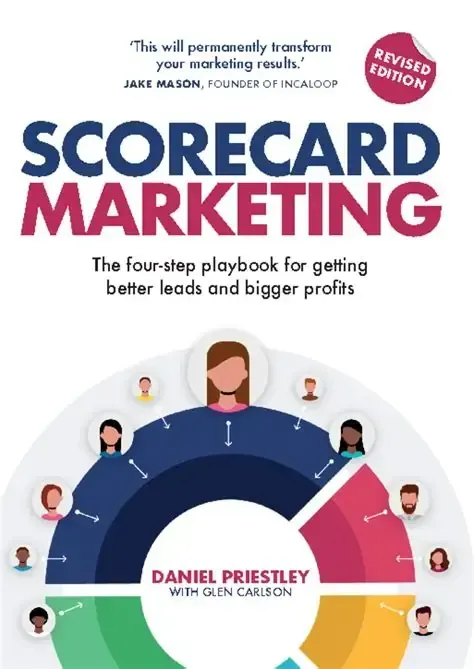From Coffee Chats to Client Connections: The Power of Scorecard Marketing

This is a practical guide for anyone looking to build deeper, more meaningful relationships with potential clients. It introduces a fresh approach to lead generation using interactive scorecards that spark reflection, offer personalised insights, and gently guide people toward your services. Whether you're a coach, creative, or entrepreneur, it helps you turn curiosity into connection—and connection into conversion.
Image: Supplied.
It began with a quiet morning at Starbucks in Sea Point. I was catching up with Leah, a friend who often blends intuition with practical insight. Midway through our conversation, she handed me a book she’d been raving about: Scorecard Marketing, by Daniel Priestly, “Read it like a workbook,” she said. “Highlight, annotate, and let it spark ideas for your coaching and wellness practice.” I smiled at her insistence. This was classic Leah, always nudging growth with a personal touch.
What the Book Offers
Scorecard Marketing introduces a modern approach to lead generation. Instead of broadcasting generic messages or relying on cold outreach, it proposes a more interactive and personalised method. The scorecard is a short, customised quiz or assessment that helps prospects reflect on their needs while offering tailored insights. It’s designed to build trust and relevance before any sale is made.
The book’s central message is clear:
“People are more likely to become customers when their interest and readiness have been identified and nurtured.”
This approach shifts marketing from push to pull. Rather than chasing attention, you create a space for reflection and value. The scorecard becomes a bridge between curiosity and commitment.
Why Lead Generation Matters
In coaching, wellness, and creative industries, your work is personal. Clients aren’t just buying a product; they are investing in transformation. That’s why attracting the right people matters. These are warm leads. They have already shown interest, engaged with your message, and are far more likely to convert into paying clients.
Warm leads mean:
Less time wasted on misaligned prospects
More meaningful conversations
Higher conversion rates
A steady flow of clients who value your work
Scorecards help qualify these leads. Instead of broadcasting to everyone, you invite people into a personalised experience. You learn about their goals and challenges, and they receive something of value in return.
My Experience: Reimagining the Scorecard
I didn’t sign up for the software recommended in the book. It’s called ScoreApp, and it helps users build scorecards with landing pages, automated feedback, and follow-up systems. For those who aren’t tech-savvy, it’s a helpful shortcut. But the method doesn’t depend on the app. You can apply the structure manually or use other platforms. What matters is the intention behind it.
As I read, I began sketching a “Wellness Scorecard” for my own practice. It wouldn’t be about collecting emails. It would be about creating value. The questions would explore mindfulness, movement, emotional resilience, and nature-based rituals.
Here’s a sample excerpt:
Wellness Scorecard Rate each statement from 1 (rarely true) to 5 (always true)
I begin my day with a moment of stillness or breathwork
I move my body intentionally at least once a day
I spend time outdoors to reconnect with nature
I reflect on my emotional state without judgment
I engage in a creative or nourishing ritual weekly
Based on responses, I could offer a yoga tip, a podcast episode, or a book recommendation from my shelf. The scorecard becomes a mirror, not a funnel. It invites dialogue, not data capture.
Turning Insight into Action
Treating the book as a workbook transformed my experience. Annotated passages, margin notes, and scribbled prompts became a living archive of ideas. It wasn’t about executing a campaign. It was about evolving a philosophy. The scorecard model, stripped of automation, became a tactile tool for client engagement rooted in empathy and resonance.
For those ready to move beyond transactional marketing—whether coach, consultant or creative—this approach offers a way to lead with insight, build trust through interaction, and anchor every offering in integrity.